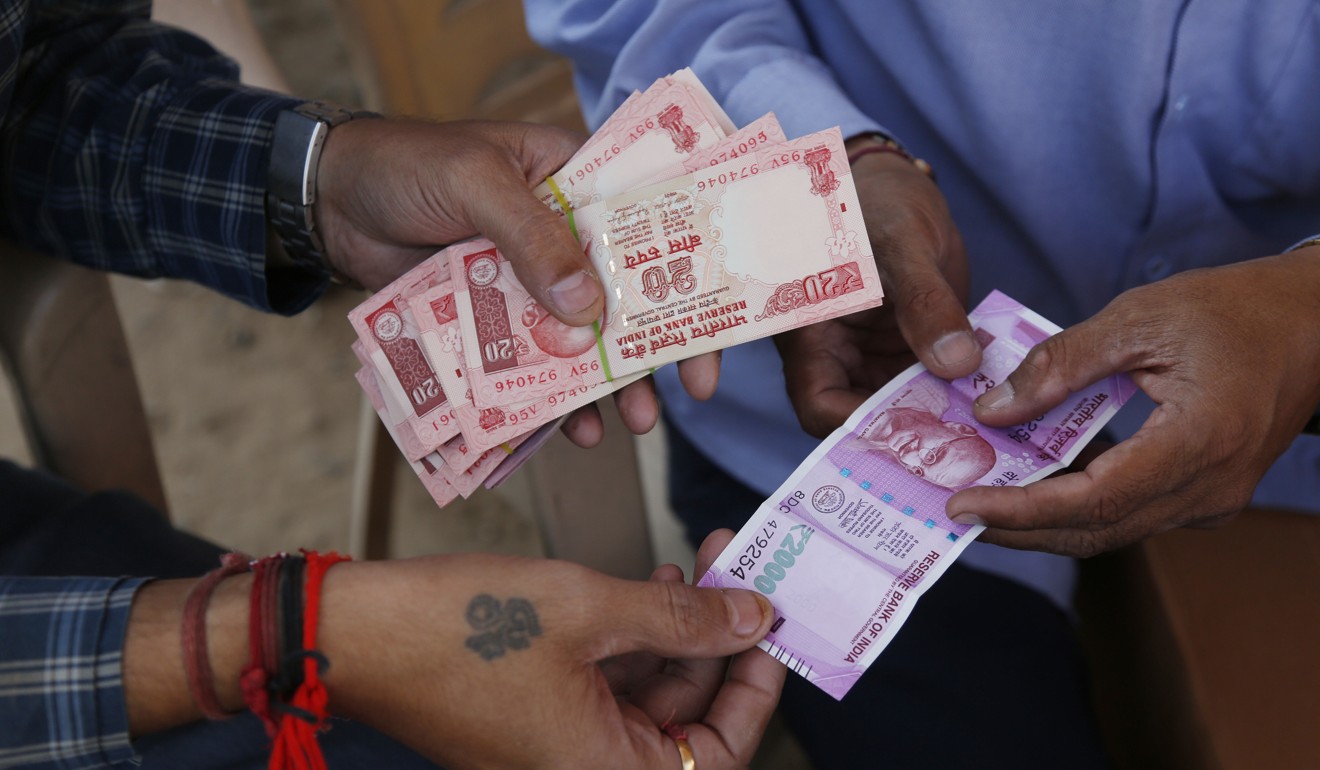
Rising US Treasury yields a clear and present danger to Asia’s emerging economies
A spike in US debt yields is contributing to chaos from India to Indonesia to the Philippines, where currencies are cratering
With stocks from New York to Tokyo going gangbusters, it’s hard to get excited about bond markets. In recent years, betting against government IOUs has become a “widow-maker” trade.
Not so anymore, given last week’s burst of chaos in the US Treasury market. On October 3, 10-year yields jumped 11 basis points to 3.16 per cent, the highest since 2011. More than the magnitude, the worry for Asia is why the 15-year downward march in long-term rates may be over.
Traders predictably grasped for explanations. News that Amazon’s Jeff Bezos increased minimum hourly wages to US$15 seemed as good as any – a reminder that drum-tight labour markets could fan inflation. Others pointed to the Federal Reserve’s tightening cycle.
What’s really going on: the bond vigilantes are circling.

The reference here is to the mercurial cast of characters who protest fiscal or central bank policies they deem dangerous. The latter connection is a non-starter. Given tame US inflation rates and latent trauma from the “Lehman shock” 10 years ago, it’s hard to argue Jerome Powell’s Fed is behind the curve.
No, the real force threatening bondland is Donald Trump’s fiscal irresponsibility. Ten months ago, the US president’s Republican Party passed a US$1.5 trillion tax cut an already robust economy did not need. More recently, traders stewed over spending increases that will push Washington’s budget deficit to the US$1 trillion mark, a near-unthinkable trajectory.
The spectre of rising US yields is contributing to chaos from India to Indonesia to the Philippines, where currencies are cratering. Part of the problem is where Trump assumes he can turn to finance America’s shortfalls: Asia. China, especially. It is Washington’s biggest banker, currently sitting on US$1.2 trillion of US government debt.
An obvious paradox worries the vigilantes: Trump’s trade war effectively seeks to bankrupt Beijing. China has already labelled Trump’s tariffs on US$250 billion of goods and counting “blackmail.” Why support Washington’s runaway profligacy? Two can play at this extortion game, President Xi Jinping no doubt realises.
It’s not that simple, of course. If Xi pulled the plug on Treasuries, the surge in yields would slam US consumers. The hit to Chinese exports would add to the pain from Trump’s tariffs. Risks also cut the other way. If 10-year US rates approach the 4 per cent, 5 per cent or even 6 per cent level, Xi’s government will be left with considerable paper losses – and some explaining to do to China’s 1.4 billion people.

Trump’s administration, after all, is making titanically large deficits great again. He is putting Washington’s balance sheet on the trajectory of a pre-1997 Asian tiger. That, in turn, is helping transport Indonesia and the Philippines back towards that dark period. That helps explain why long-term US yields are at a seven-year high.
The shape of the so-called yield curve, a line that plots rates from short-duration to long, is now almost flat. That, says Will Denyer of Gavekal Research in Hong Kong, gives investors few good incentives to buy longer-dated Treasuries. If this rationale leads to higher 10- and 30-year debt, Asia could be in for a rough fourth quarter.
Yasuo Sakuma, chief investment officer at Libra Investments in Tokyo, adds that rising US yields are shaking world markets and contributing to a plunge on tech stocks, which tend to have high price-to-earnings ratios.
The bond vigilantes are just beginning to reassert themselves as Trumponomics imperils Washington’s remaining AAA credit ratings. That vicious cycle is a clear and present danger to Asia’s export-led economies and markets already on edge. A spike on US yields really could not come at a worse time for this region’s emerging economies.
William Pesek is a Tokyo-based journalist and author. He has written for Bloomberg and Barron’s

